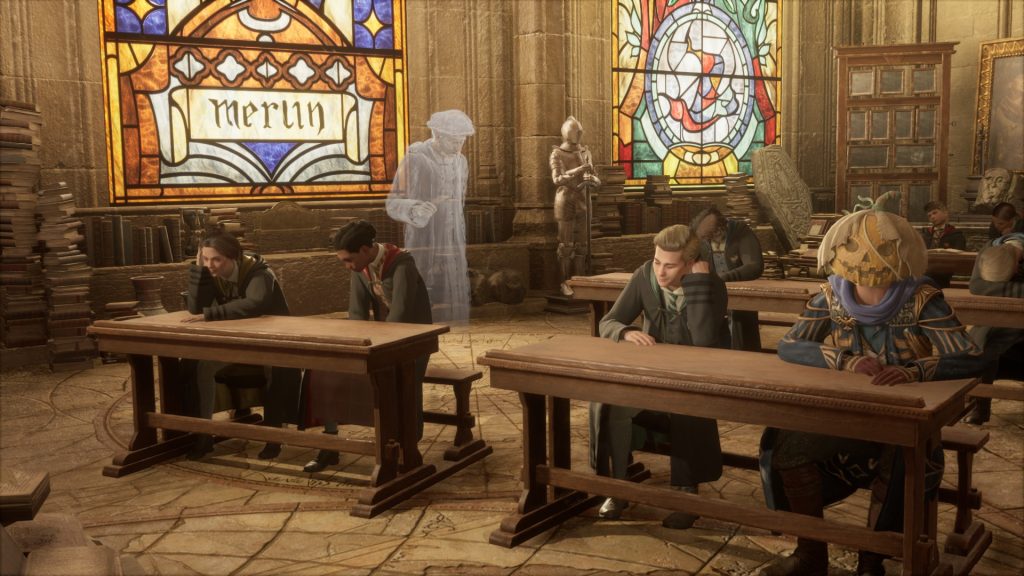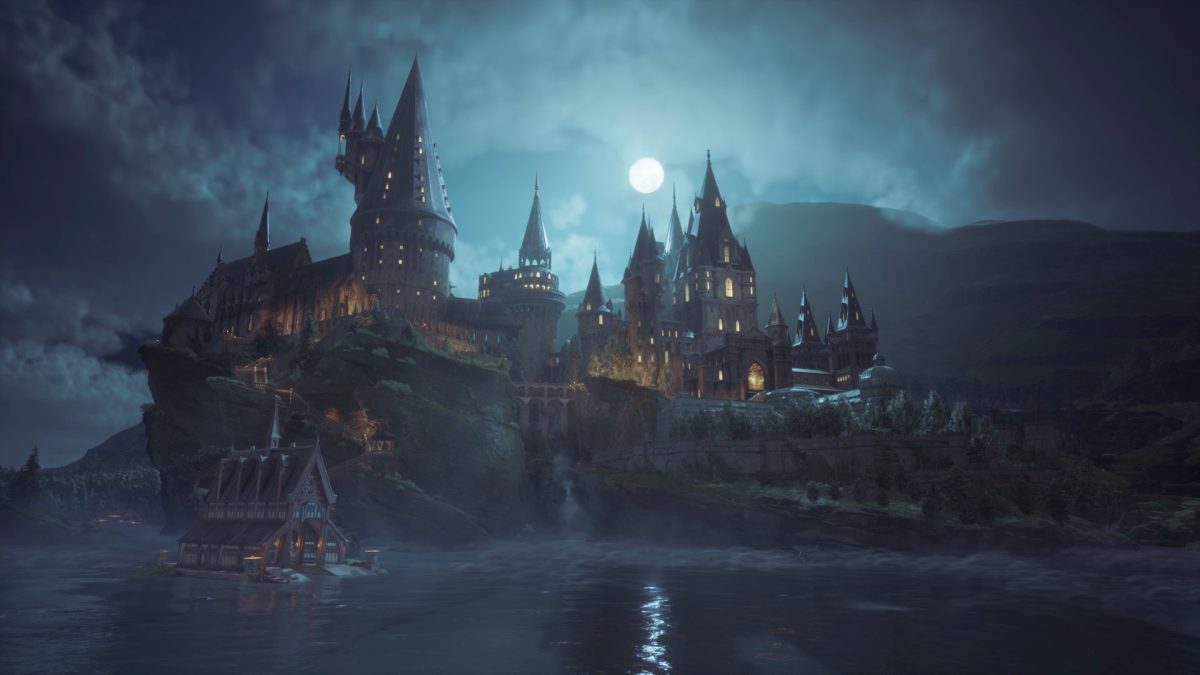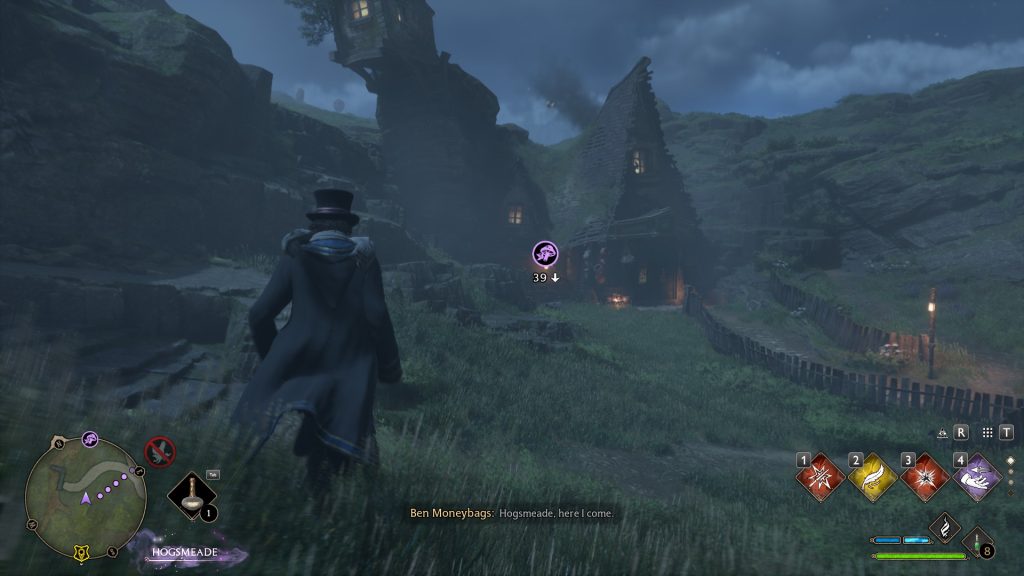Looking for the Quick Review?
Kids today have everything. Back in my day, the devastation that you’d never receive your invitation to Hogwarts School of Witchcraft and Wizardry came when you turned eleven or twelve. Now, with the launch of Hogwarts Legacy, today’s youths get to keep that illusion up a little longer. Not only might you still be admitted as a fifth year, your late registration might come with a few transfer credits in the form of insane special powers. Harry Potter was the boy who lived, but you’ll be the boy (or girl) who can kill.
Hogwarts Legacy is a game I waited a long time to play. Unlike some callous revisionists, I’ll always go to bat for the Harry Potter series’s early video game adaptations (at least the PC ones). Maybe I’m just staring through rose-tinted round-framed glasses, but those games, kid-friendly semi-open world Metroidvanias, were way better than they had to be. Even so, none of them came close to fulfilling the fantasy of truly immersing players in the world of Harry Potter, letting them create their own Hogwarts students and experience the wizarding world for themselves (and not through the eyes of the lightning kid). That fantasy laid dormant for more than a decade after the release of the final mainline Harry Potter movie. I think most dreamers had given up hope. But then, when the world had all but moved on, here came Hogwarts Legacy.

I think I’d be remiss to not take a (brief) break and address the floating elephant in the room. Part of the world’s pivot from the wizarding world was its stagnation. Years after the last of the seven books had been split (through unspeakably dark magic) into two and released, parent studio Warner Bros put into motion a follow-up series and released its flagship film, Fantastic Beasts and Where to Find Them. Critical response to this first movie hovered around the level of its predecessors, but its two sequels bit off far more than they could chew and led to the premature shelving of the franchise. In the interim, a follow-up play featuring an adult Harry Potter and his children was well received by theatergoers but panned heavily by others (me), who hated it for being bad.
In a fragile state and desperate for rejuvenation, whatever the Potterverse needed, it wasn’t what came next. Author J.K. Rowling, previously only known for the Harry Potter series, took on a second job, moonlighting as the face of a movement fighting back against the budding accumulation of rights for transgender people. I don’t have the time, space, or talent to lay out Rowling’s argument or the arguments levied against her in this piece. It’s not the place for it. This is a video game review. The reason I include this at all is because the game’s release feels undivorceable from the controversy spawned by the franchise’s progenitor. Rowling’s maintained refusal to pull back from her positions continues to make headlines and inspired a well-publicized boycott of the game.
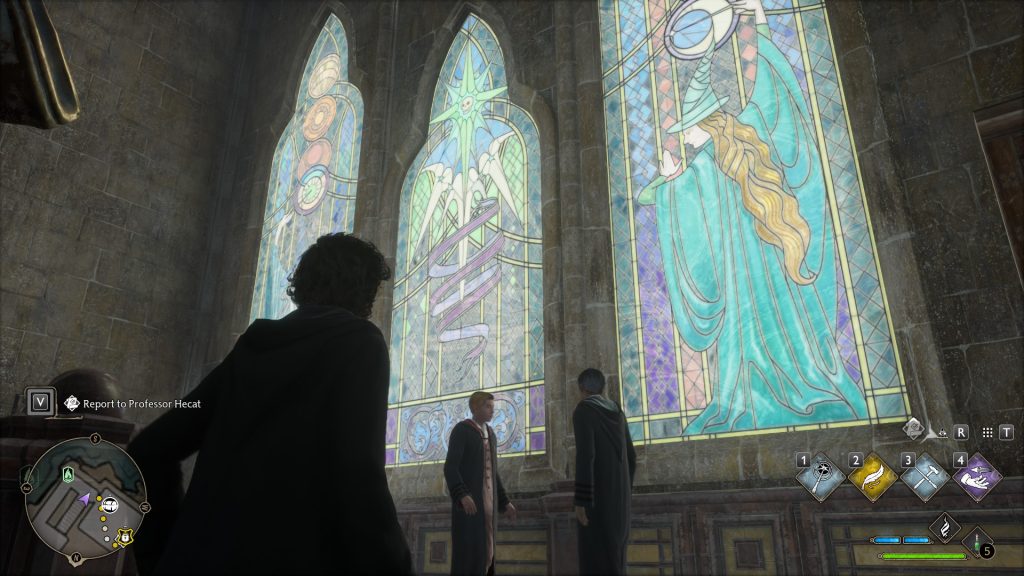
We’re far enough out to know that Hogwarts Legacy has been remarkably successful in spite of that boycott. Despite purchasing and playing the game, though, I think it’s worth hearing what those rallied against it have to say before you make your own purchase. I won’t take up any more of your time with my own opinions or justifications, but I hope you’ll treat the arguments fairly and remember the people on the other end. Many of us are lucky enough to not be closely affected by the issue core to these arguments. It’s important to exercise compassion and to remember that others experience the same world differently.
I’m going to talk about the wizard game now.
Hogwarts Legacy must have been a massive undertaking, especially in the hands of the studio that most recently gave us Cars 3: Driven to Win. To promise hardcore fans of a series like Harry Potter that your product is the conduit through which they’ll finally get to explore their favorite fantasy world is a huge commitment. Given that different people have different knee-jerk interpretations to what a game set in Hogwarts should be, it seems disappointment would be inevitable.
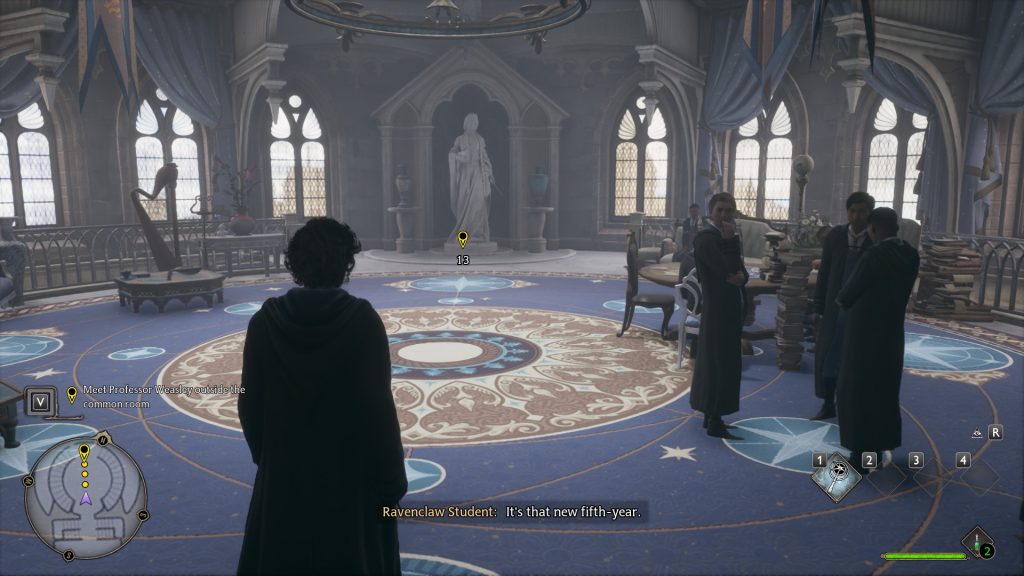
But of all the expectations with which we can fill a game like Hogwarts Legacy, I think the big one at the core, the one that rises through the butterbeer foam and finds itself shot out of the goblet of fire, is a faithful rendition of the wizarding world’s best-known school. It seems even more important when you put “Hogwarts” in the name of the game. To be able to walk through recognizable halls, explore thoroughly-imagined chambers, and get up to your own brand of mischief in the school you’ve so far only been a witness to, is the goal from which every other objective finds meaning. And, for what it’s worth, I think they’ve killed it.
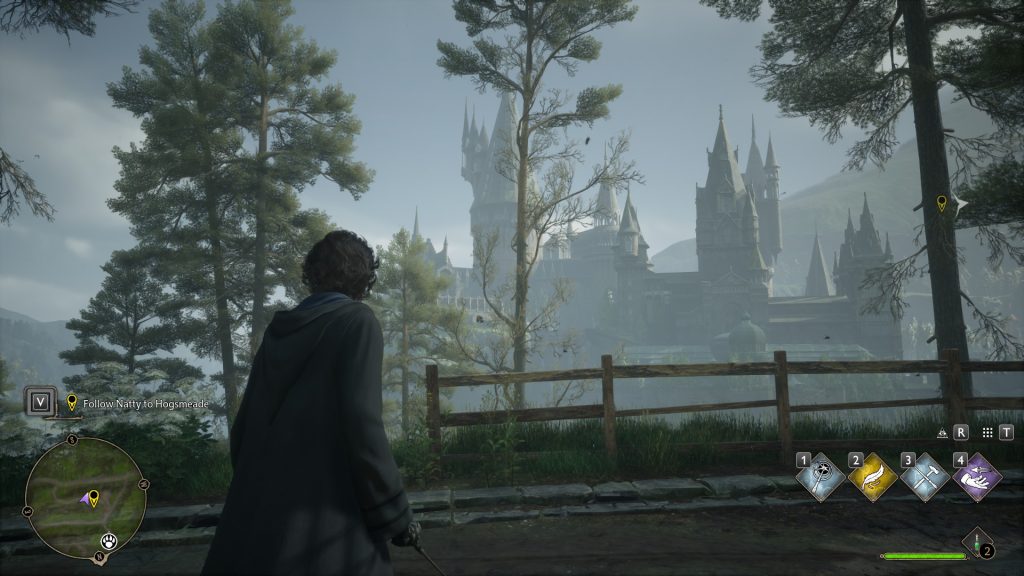
World
Hogwarts Legacy’s Hogwarts feels like Hogwarts. Some of the most iconic spaces from the films, like the Great Hall, clock tower, and Defense Against the Dark Arts classroom, are immediately recognizable. Other spaces, like the Prefect’s Bathroom and Death Day Party chamber, were lauded online for how faithful they were to the original text of the books. This, I think, is the magic of Hogwarts Legacy’s titular school: drawing from text, film, and imagination when each is most appropriate. Spaces we’re most used to seeing are rendered just how we remember them. Rooms we know better from the books defer to their original descriptions. And the spaces in between, the hallways left uncharacterized in the novels and painted a dull beige in the movies, receive new life here. This is, thanks to the devs and their creativity, the most beautiful Hogwarts has ever been, with ornate marble floors and expansive, brimming-with-character atria replacing the cold stone passageways of the original films.
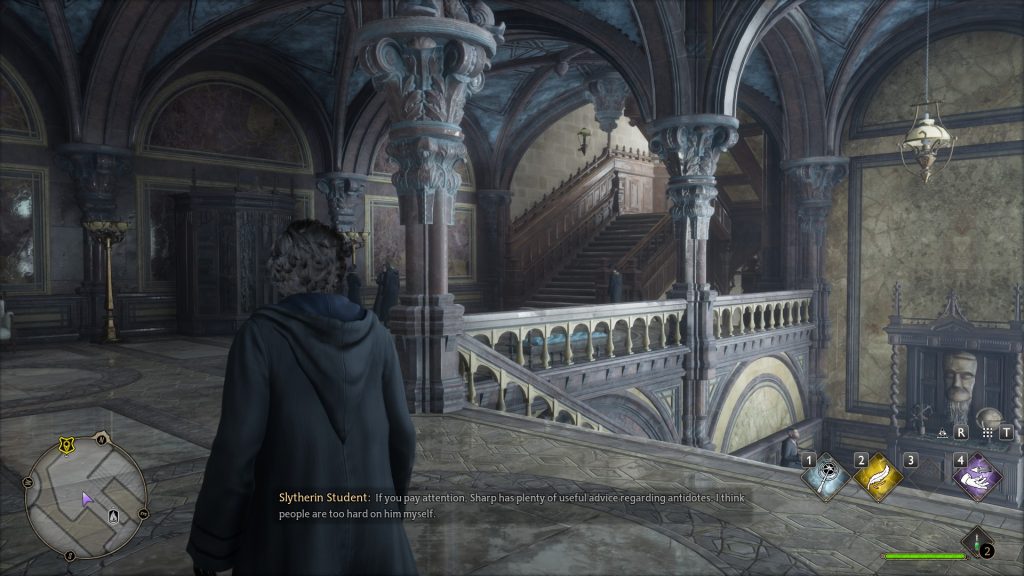
That Hogwarts is fun to explore is an accomplishment that I think others might undersell. Deviate too far from the source material and fans will be put off, but stick too close and there’ll be little to see that we haven’t already seen. Hogwarts Legacy does an excellent job of encouraging players to find the spaces they know while giving them a reason to fall in love anew with spaces they’d never experienced before.

There are, of course, some changes I found disappointing. The famed moving staircases of the books and films are replaced by a spiral network of what could more adequately be labeled “appearing staircases”, as they phase in and out of existence on demand but never change their paths. Admittedly, I’ve gotta hand this one to the devs — stairs that determine the destinations of their climbers on their own whims are fun on paper and on the screen, but would probably be tedious to traverse. Sometimes you just want to get to class without being rerouted to the stink hallway for the third time in a row.
Where Hogwarts succeeds in keeping all of its spaces unique and interesting, the surrounding Highlands, a space much, much larger than the school, unfortunately fills a lot of its hills and valleys with less unique and notable setpieces. The landscape itself is well-crafted, and it’s legitimately fun to hop on my broom and fly from one place to another, but it’s harder to maintain a sense of ludonarrative dissonance as a sea of copy-and-paste completion objectives stretches wide beneath me.

I have to spend some time complaining more directly about these side objectives. Most of them are optional and offer only either cosmetic or minor gameplay rewards. Some of them are more fun than others—I’m always happy to pop a series of balloons with my broom on my way from A to B—but the most plentiful in-game objectives, the Merlin Trials, feel like a huge miss.

I think it makes it worse that I want to like them. Scattered across the map, they clearly take heavy inspiration from The Legend of Zelda: Breath of the Wild‘s korok seeds in both function and mechanics, being little optional puzzles we stumble upon, unlocking additional space for loot when we complete them. With a total of 900 korok seeds in Breath of the Wild it’d be hard to make a solid argument that they can’t be tedious, but the toll of Hogwarts Legacy’s Merlin Trials becomes overbearing much more quickly. Where the korok seed challenges were most often small, easily-solvable diversions, the Merlin Trials, while no more complex, feel more stressful and time-consuming. It feels like the devs were concerned that spells like Revelio would make solving the puzzles too easy (by displaying all the interactive elements visually at the press of a button), and to compensate, they increased the distance at which the puzzle pieces spawn to require the player to spend time searching for them. But this decision ends up drawing out a search process that would benefit from being much shorter. I often found myself giving up on a trial after searching for several minutes with no indication of what direction I should be looking in. Again, with 95 Merlin Trials in total, these things are everywhere. Over his entire canonical year at Hogwarts, my character never once grew tired of encountering the plentiful paving stones that represent the Merlin Trials (“What’s this?! A Merlin Trial?!“. I wish I could say the same.
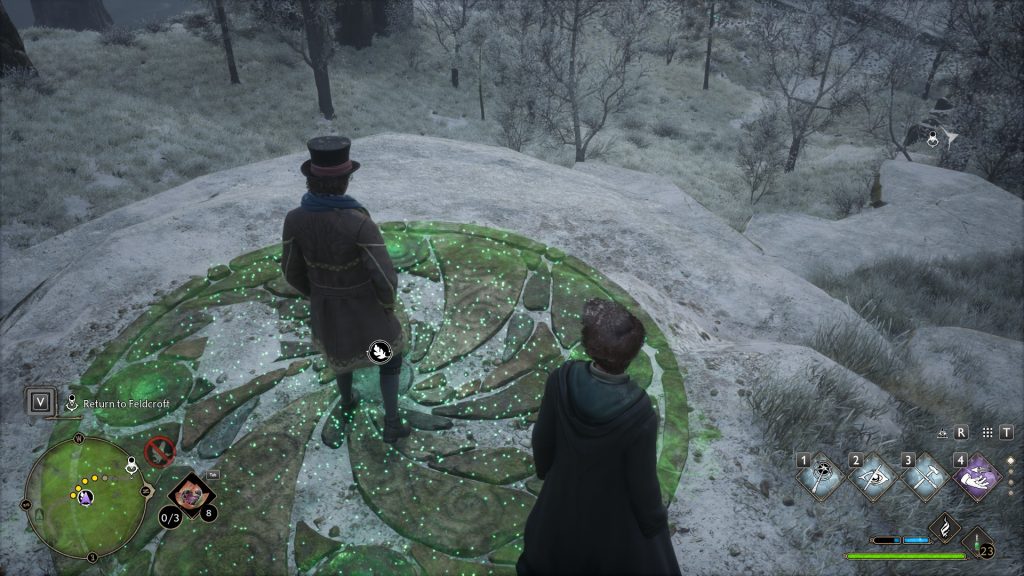
Similar to the Trials in pure frustration potential: everything remotely adjacent to the Alohamora spell. Perhaps one of the most iconic spells from the books and films, Alohamora is what magical carjackers use to unlock doors, chests, and safety deposit boxes without bouncing back to a fifteen minute YouTube tutorial. In the books, films, and earlier games, casting the spell is as simple as uttering the incantation; point your wand, say the word, and you’re in. In that way, it’s just like every other spell in Hogwarts Legacy. The devs must have thought that’d be far too easy, because each time you cast Alohamora in this game, you’ll have to play through the little lockpicking minigame.
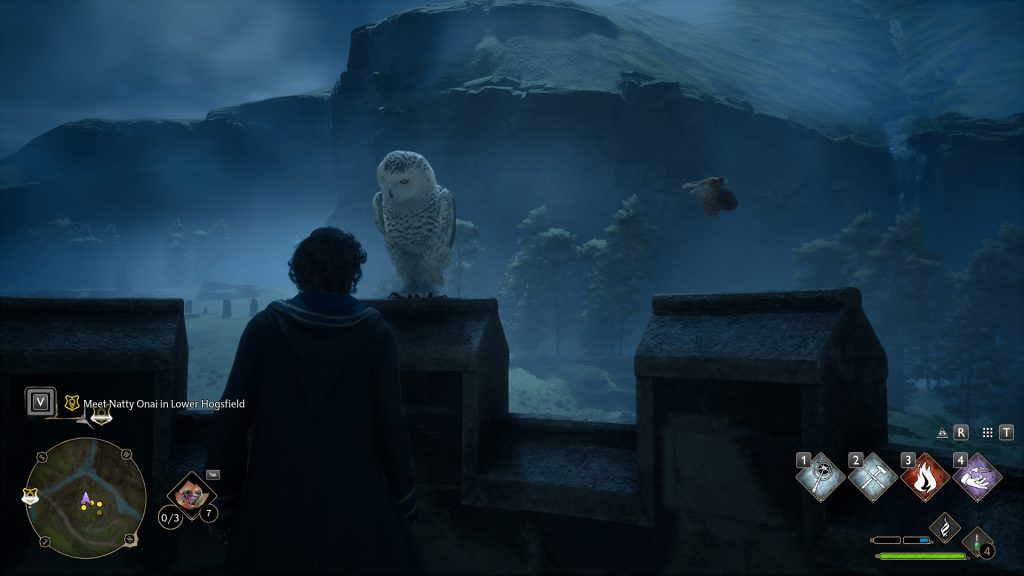
This minigame was the subject of the first criticisms I saw about Hogwarts Legacy, published days before release. I’d tried to hold back from reading too much, so in limiting my understanding I’d assumed that the minigame was difficult or maybe just finicky. In truth, it’s neither. It’s a simple mechanic that never increases in difficulty; if you can solve it once, you can solve it a hundred times. That’s the problem. You’ll have to. Each time you want to get past a locked door or open a locked chest, you’ll be playing through this minigame, doing the same double-turning motion over and over and over again. Occasionally, you’ll be rewarded with an interesting collectible or a clothing item with better stats than the one you currently have equipped, but more often, all that tedium will be for naught. I don’t know if I can count high enough to enumerate the number of locked rooms and chests containing only a single low-quality loot item. Of course, math is an elective at Hogwarts, so you can’t really blame me.
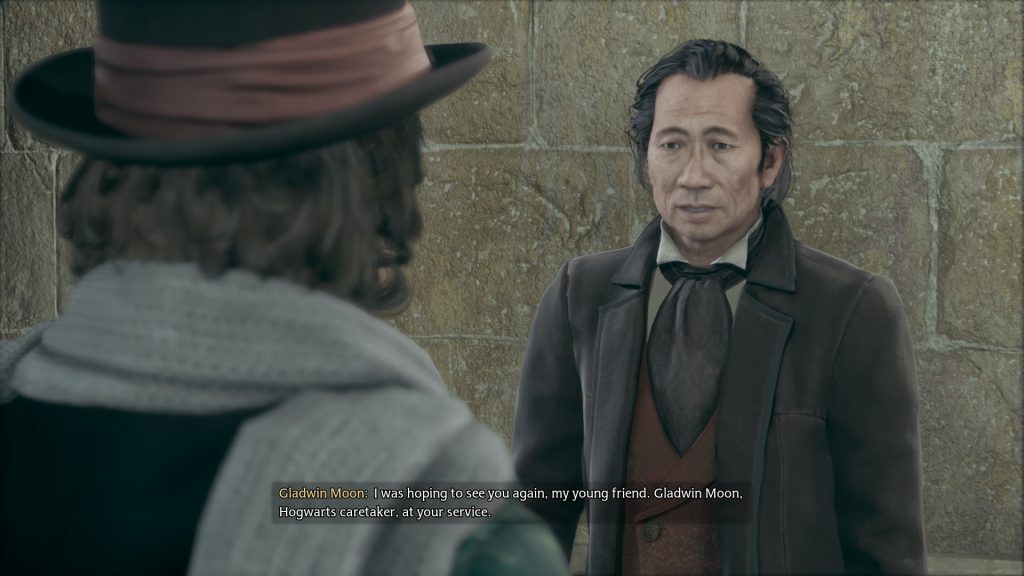
If this isn’t bad enough, the spell’s functionality is further gated by being broken into three parts accessible only through ranking up the spell, a fate that befalls none of the game’s other incantations. In order to learn each rank, we have to locate an increasing number of collectibles for the game’s caretaker, Gladwin Moon, also the winner of 2023’s Worst Voice-to-Vibe Ratio award. These collectibles, demiguise statues, can only be interacted with at night and are often themselves hidden behind locked doors, necessitating the acquisition or upgrading of Alohamora before they can be collected to upgrade Alohamora. In all, Alohamora invites in far more tedium than it’s worth. I’ve seen some solid suggestions online on how to fix it, but I think the game would benefit enough by stripping it down to its core and making it function like any other spell from the start.

Spells
The rest of the game’s spells tell a different story. As an inhabitant of this magical world, how at-home we feel hinges pretty strongly on how connected we are to that magic. Here, I think Hogwarts Legacy meets the challenge, delivering a comfortable variety of engaging spells that have us feeling sufficiently magical throughout the game. Of course, I’d always be happier with more, but Hogwarts Legacy seems to have loaded the palette with most of the notable and useful spells from Potter lore.
Admittedly, a satisfying selection of spells is only as valuable as the spellcasting system that accompanies it. One of the most consistent issues with previous Potter games has been the limitations of those spell systems, with titles either relying too heavily on contextual actions (by allowing players to cast specific spells only on specific objects or enemies) or falling back on one-at-a-time spell selection.

This game frees up a little more wand room by allowing players to slot any four spells at a time, casting them with either the first four number keys on PC or four of the main interaction buttons on console.
Four spaces isn’t nearly enough to cover the number of spells we learn in our first year at Hogwarts, so the game is kind enough to allow us to spend talent points (earned by leveling up) on up to four additional rows of spells that can be flipped through at the touch of a button.

The system is a significant improvement over those of its predecessors, but sixteen slots is still too few for the game’s twenty or so allocatable spells. In theory, this limitation could have been designed to necessitate the construction of a unique playstyle, but in practice it simply incentivizes maintaining a loadout of certain spells and ignoring others completely. If I’d had some more space, I may have spent more time experimenting with spells like Bombarda and Descendo, but with limited space, I felt forced to prioritize utility and neglect the spells I learned later in favor of the ones I’d grown familiar with. The game offers some incentives to shake up a stagnating playstyle, but barriers like these can still feel too steadfast to break through.
Now, as though the limited space for all of your spells wasn’t bad enough, it’s made worse by the presence and necessity of spells and actions that are useless outside of the Room of Requirement. The room, which acts as the player’s home base in Hogwarts, is introduced alongside three spells used to summon, desummon, and modify furniture and crafting interfaces. These make customizing the Room easy, but using them requires finding space (even if only temporarily) for them on those already-cramped spell menus.
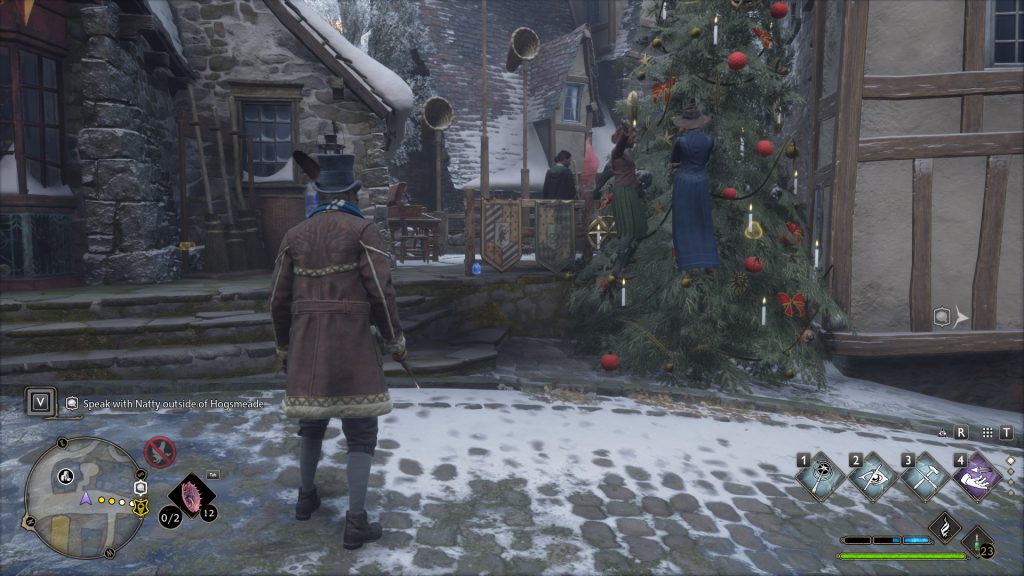
My strategy was to dedicate the fourth and final row to these spells, but it turns out that’s still not quite enough, as the interactions involved in capturing and caring for magical beasts also take up spell slots. The Nab Bag used to poach rescue beasts is useful only outside of the castle’s walls, and each of the five other actions become useless once we leave the Room of Requirement. It would have been nice to have had a separate menu for these to clear up space for more universally-applicable or combat-focused spells.
I think one of the reasons these spell selection limitations bother me is because they’re so clearly designed to work well with a controller, and I played on PC. With a whole keyboard of numbers, letters, and bonus mystery keys at my disposal, it feels like there’s gotta be a healthier middle ground between the paltry four-of-sixteen of this game and the ten thousand on-screen clickables of a game like World of Warcraft. I’ll be the first to label this a nitpick, and to acknowledge that it’s not even remotely common for PC copies of a game to receive this sort of special treatment, but it’d sure be nice.

All this said, I think the game does deserve some recognition for designing a spellcasting system that allows for far more wiggle-room than Potter games of the past. And while I wish it would have come up with a better way to organize the aforementioned category of narrow-use spells, I do appreciate the way it’s organized some of its other universally-accessible spells like Revelio (bound to “R” on PC) and Protego (bound to “Q”).
Characters
The physical conditions of Hogwarts and its surrounding Highlands set the stage for the game, but only its characters can bring it to life. Harry Potter fans fell in love with the students and teachers of Hogwarts. Can this earlier interpretation of the school recreate that magic?
Sorta. The game comes with a plentiful and diverse cast of potentially-strong characters, but we only spend enough time with a few of them to see them really shine.
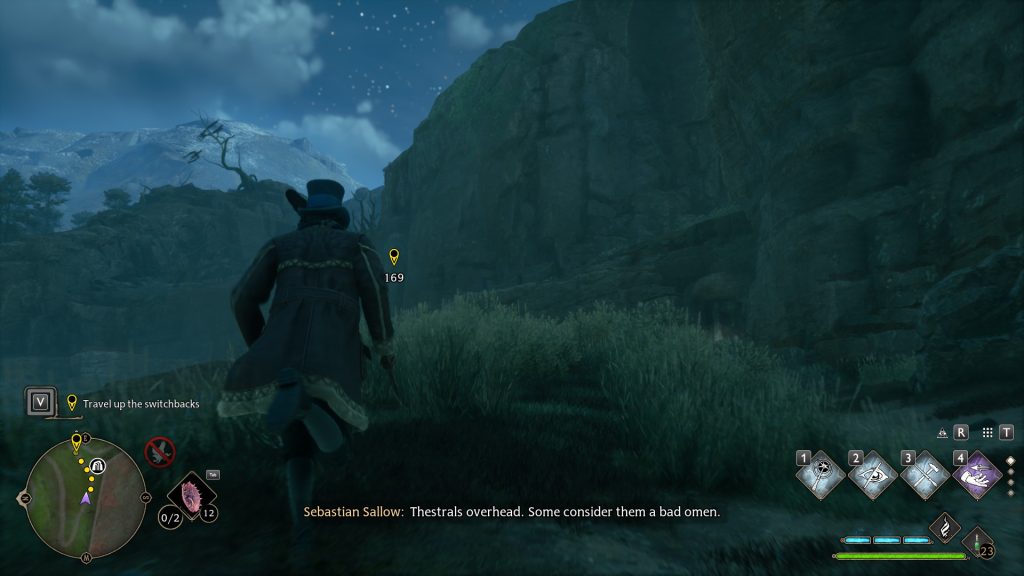
The books lavished the most focus on the students of Gryffindor House, the bravery-focused Hogwarts House to which Harry Potter and most of his friends belong, but here it’s the appropriately-ambitious Slytherin House that takes center stage. Slytherins Sebastian Sallow and Ominis Gaunt receive plenty of the game’s narrative focus, which helps make them perhaps the strongest characters in the game. It’s no surprise that all of my friends identified most strongly with Sebastian, at least in the first half of the game. His tragic and engaging backstory aside, Sebastian feels like the closest thing the game offers to a real boarding school friend. From humbling beginnings, our relationship with him grows over the course of the school year. We get to know him better, he gets to know us. We cooperate, we compete, we conflict. Sebastian’s is the strongest of the students’ stories, and with the proper tending and resources, it could have made for a more compelling main questline than the one we received. Unfortunately, some decisions toward the end lessen its gravity.
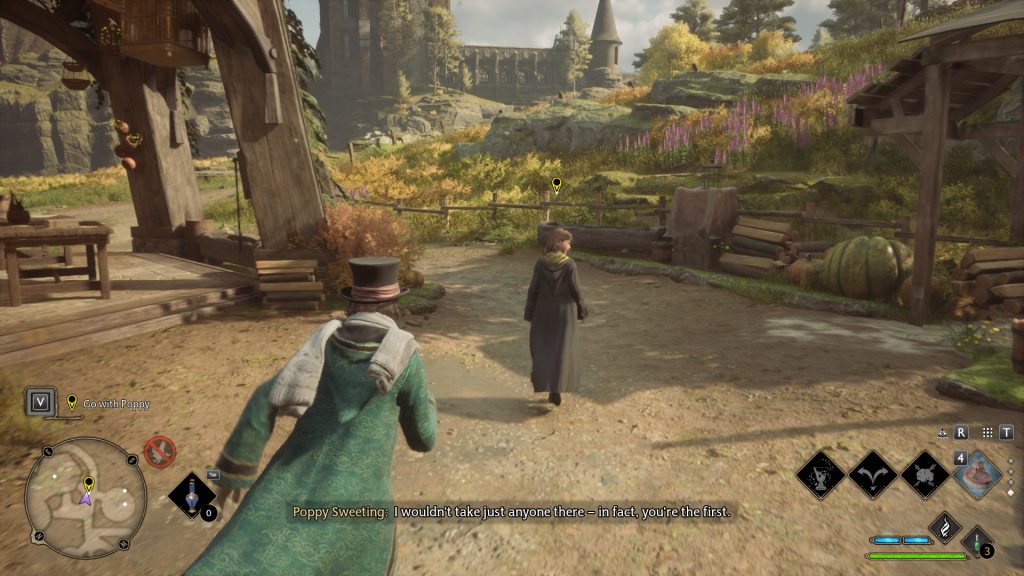
Hufflepuff’s animal friend Poppy Sweeting is probably next in line after Sebastian in the tier list of strong student characters with meaningful stories, and I really enjoyed playing through her magical creatures-themed questline. Gryffindor transfer student Natsai “Natty” Onai’s, by comparison, feels somewhat weaker. Her own background and backstory rival Sebastian’s, and her introduction is arguably stronger (we have more in common from the start, both being transfer students), but the game struggles to pair the beats of her personal growth with the story events happening around her. It feels like she inherited quests from other characters and the devs made an attempt to wrap her story around posts that weren’t erected with it in mind. In the end, she was still a strong and compelling character, but I never felt a believable friendship connection the way I did with characters like Sebastian and Poppy.

The game makes an attempt to characterize some of our remaining classmates, but other students miss out by receiving too little screen time. Amit, Ravenclaw’s premier offering, is relegated to the second string of classmates, the only exception in his treatment being that he’s allowed to tag along for a main quest just long enough to be insulted and sent on his way.
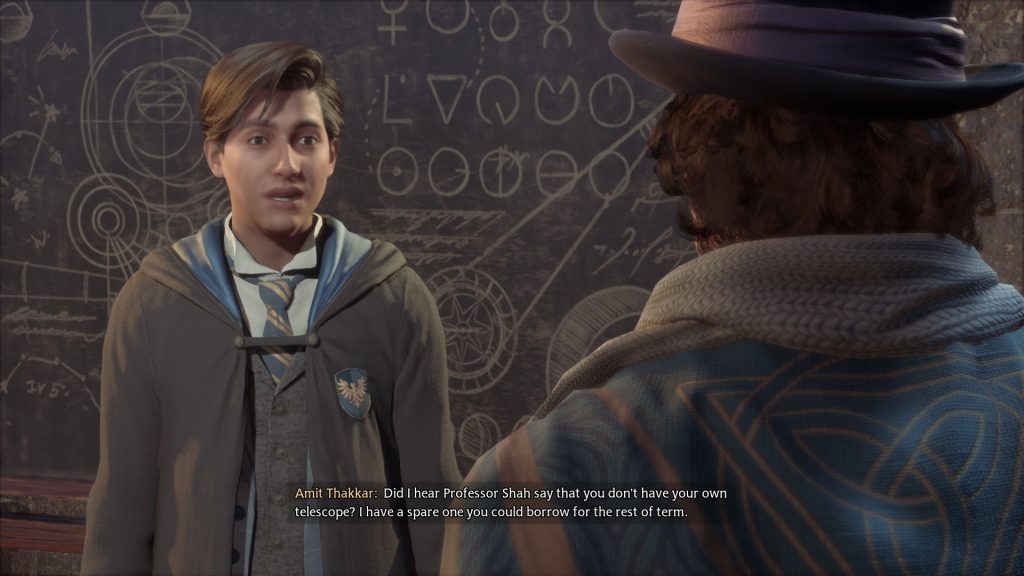
Teachers, meanwhile, lose even more through the infrequency of their own screen time. This is particularly unfortunate as the creative team seems to have put a lot of effort into their characterization and design. It would have been really neat to delve into how each of these professors differ from their original series counterparts, but instead we spend more time with their similarities. I believe Professor Weasley can be an independently-compelling character, but I have to look past the narrative resemblance to Professor McGonagall to do so.
Even Professor Fig, the Magical Theory professor who takes us under his wing and introduces us to the wizarding world, seems to mostly disappear in the late game. He’s the only character directly involved in our extracurricular experiments with ancient magic, and in that capacity he does well, but his inability to accompany us in our trials leaves him sometimes feeling like more of a taxicab companion.
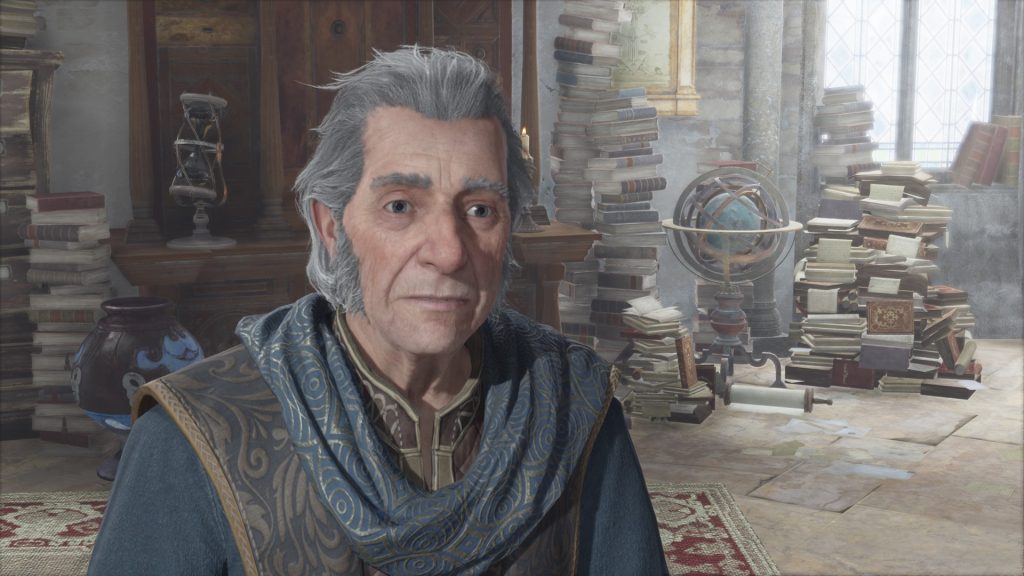
But even so, by the end of the game, I did feel like I had an idea of who Professor Fig was. On the other hand, perhaps the most egregious staff member absence is that of the school’s headmaster, Phineas Nigellus Black. Throughout most of the game, Professor Black’s reputation as an absentee headmaster precedes him. To have him sitting out most of the story is congruent with that reputation, but a late-game quest focused on our familiarity with his personality falls flat when we ourselves are shown so little of it.
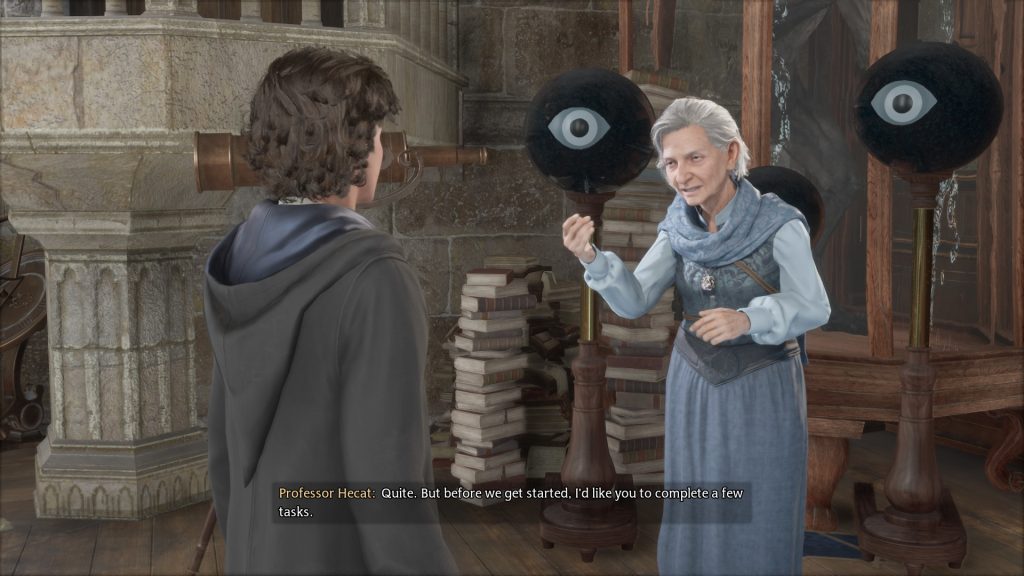
Admittedly, the developers do make an attempt at increasing face time with professors through the special extracurricular assignments they offer the player in the interest of helping us catch up to our peers. Unfortunately, this seems to detract as much from logical interaction with professors as it provides. Of the classes our characters take, only three of them are traditional spell-learning courses (Charms, Defense Against the Dark Arts, and Transfiguration), yet of the twenty or so spells we learn, Professors Ronen and Hecat, the Charms and Defense Against the Dark Arts professors (and two of the most interesting characters on Hogwarts’s payroll) only teach one spell each. By contrast, the Divination professor, Professor Onai, also teaches one, and the Potions, Herbology, and Flying professors each teach two.

Professor Onai’s inclusion can be forgiven, as this is one of our only interactions with her in the game. But the Potions, Herbology, and Flying professors all teach important gameplay elements related to their actual subjects (potion brewing, crop growing, and flying) on top of acting as the game’s premier spell tutors. It feels bizarre to have delegated nearly all of the spell learning to these teachers of wand-optional classes, especially when professors like Ronen and Hecat end up deprived.

Story
Hogwarts Legacy’s main quest is the weaving of two interlocking strands: our adjustment to our ability to sense and control ancient magic, and our involvement in the ongoing Goblin Rebellion. Despite the game’s title and marketing focusing squarely on Hogwarts, most of the critical story beats of the game happen outside the school’s walls. I don’t think this is always a bad thing — it is cool to get to explore a little further than the books and movies showed us, and I think the devs have earned a chance to put their own creativity on display. The game’s core questline certainly isn’t bad, but it definitely falls short of being great or even particularly memorable. I was satisfied enough with the ending, and I thought some of the characters and ideas it presented were interesting, but it often felt too divorced from the familiar world of Hogwarts to really land. It was less like I was endeavoring to save the school and more like I was working an off-campus job, moonlighting as a child soldier trying to solo kill the goblin insurrection.
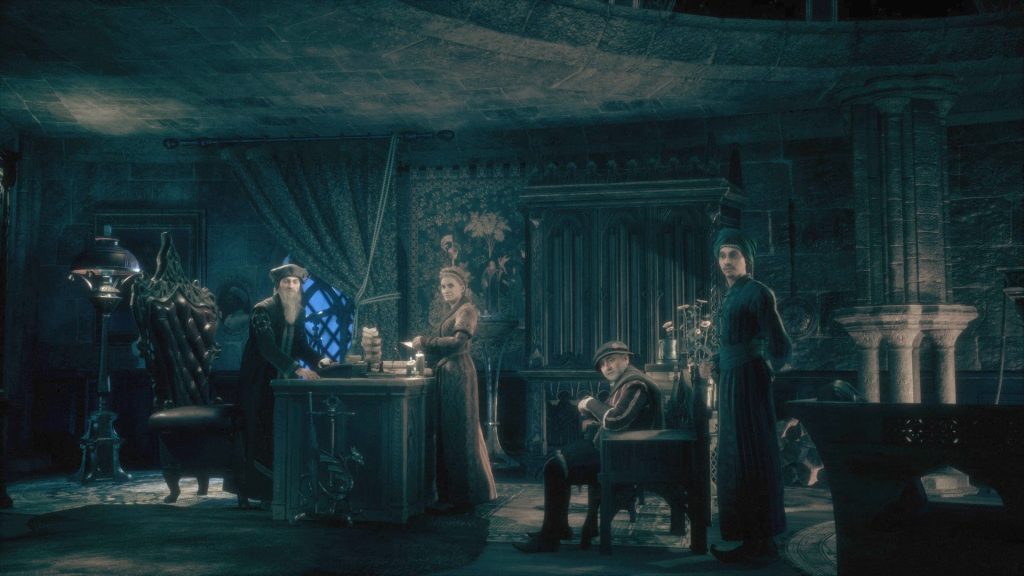
The ancient magic storyline is stronger narratively than the goblin rebellion, but somewhat less engaging — the cutscenes are great, and the characters are compelling enough, but the ancient magic trials feel more removed from Hogwarts than anything else in the game.
Narratively, ancient magic in general feels like a crutch the game didn’t end up needing, a story justification for the player’s late start that could be supplanted by their magical ability simply manifesting later than normal. In practice, the combat applications of ancient magic are fun and do add to the game, but not necessarily more than they would have had they been labeled normal magic.
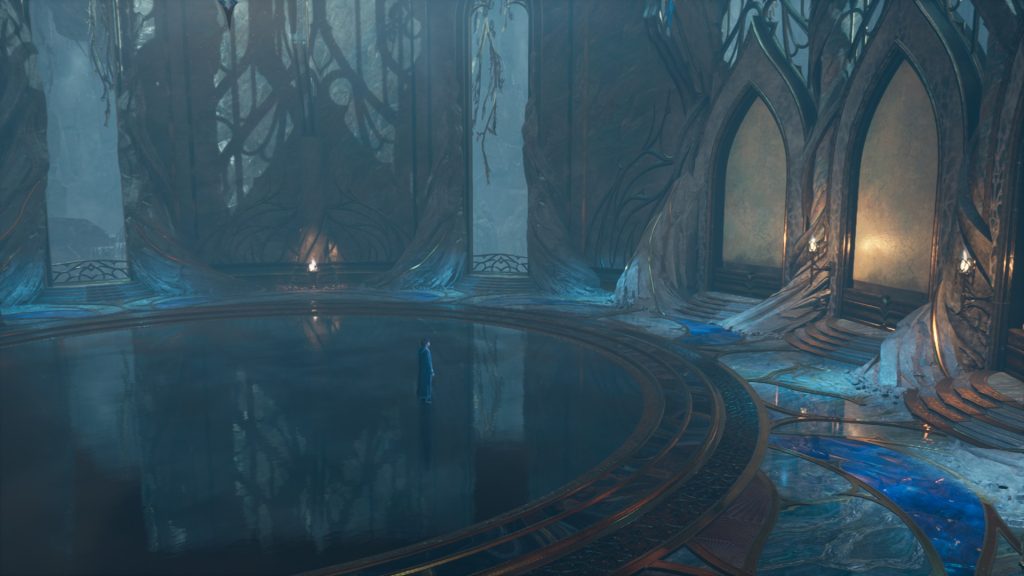
The Dark Arts
Speaking of different varieties of magic, we have to talk about dark magic. In preview streams and promotional material for the game, the ability to use dark magic and choose a darker path was proliferated purposefully by the devs; the $70 edition of the game is wholly Dark Arts-themed.
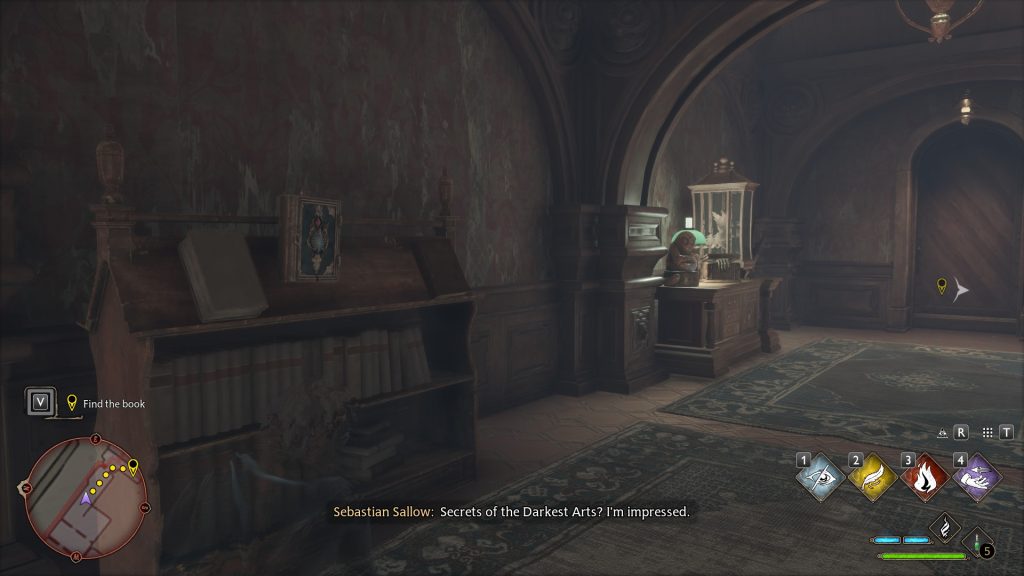
They certainly weren’t lying; even without the $10 Dark Arts Arena and associated cosmetic items, the game allows players to wield some of the most iconic and heinous dark magic in the wizarding world canon: all three of the unforgivable curses, spells outlawed as magical crimes against humanity. One of the game’s companion storylines features dark magic as its central element. So the devs weren’t incorrect in suggesting players could choose to be dark witches or wizards, but the implications that come packaged with that promise may be misleading. First, it seemed that the devs had implied from early on that the choice to use dark magic would be meaningful. I’d originally decided that I’d avoid it in my playthrough. In-universe, dark magic earns its reputation, with the unforgivable spells used exclusively for torture, control, and murder. I wanted to make friends and maintain positive relationships with the students and teachers around me. It’s hard to do that when you’re a known murderer. That’s what I figured, at least. But it turns out I was super wrong. No one cares if you use dark magic in Hogwarts Legacy. Teachers won’t look down on you for it, your friends won’t shun you. You won’t come close to being sent to Azkaban (unless you’re a Hufflepuff student on the unfair receiving end of the game’s best house-exclusive quest). I’ve heard some folks online say that enemies will reference your reputation for using dark magic in combat, but I haven’t noticed that so far. It’s possible the dialogue is rare, but if so, Ignatia Wildsmith and my character stepping within a 12 mile radius of Hogsmeade have a thing or two to teach the poachers and Ashwinders I’m fighting.
Story consequences aside, the unforgivable spells feel a little too gamified. Actually, let me be more specific: one of the spells seems too gamified. Imperio, the mind-control curse, and Avada Kedavra, the killing curse, pretty much just do what’s on the tin. The animation that plays when we cast the killing curse is weightier than the other spells, and it certainly feels more evil. I’ve seen approximately one million people online point out the irony of Avada Kedavra being forbidden while burning, slicing, and blasting people to death remains perfectly legal and uncontroversial, but we’re going to have to do the right thing and chalk that up to narrative dissonance, because what I really want to talk about is Crucio. Also known as the torture curse, Crucio is described as causing intense and prolonged pain to victims. To me, it’s the darkest piece of magic in the game by far, and it feels weird to be able to select Talents to upgrade my use of the brutal pain factory spell, especially when I head back to school for another leisurely game of Summoner’s Court shortly thereafter. Avada Kedavra and Imperio, sure, they’re naughty. But I’ve killed people in video games before. To my knowledge, this is the first game I’ve played where I’ve been invited to engage in purposeful torture, and it’s the damn Harry Potter game.
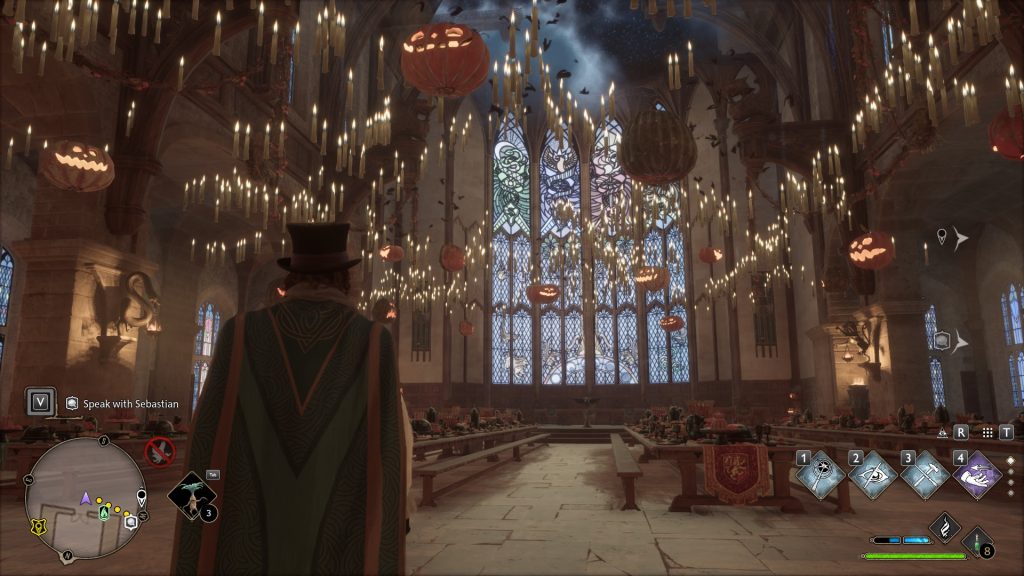
Of course, unforgivable curses aren’t the only way to engage in dark wizard debauchery. Crucio and other curses may cause physical pain, but it’s also well within our game-given rights to cause emotional pain. Not only can you be a dark magic in action, you can be one in attitude. In pre-release media, the devs played up our ability to really get into character as dark wizards. In practice, the post-release truth is something a bit less captivating.

Dialogue
Hogwarts Legacy uses a branching dialogue system in conversations, but, exempting some initial branches and rare occasions, we’re almost always limited to just two options. Fallout 4 received a fair bit of criticism for limiting its voiced protagonist to a central pantheon of good, evil, and sarcastic dialogue options. Hogwarts Legacy gives us the good option alongside a mix of the other two. Most interactions have a good response and a bad response. Of course, where narratively important, both responses are usually good.
Early on, I was worried that selecting the wrong response might change my experience significantly, that if I told someone I wasn’t interested in their crazy plan, it’d lock me out of content. Fortunately for me, I learned not far into the game that many of these choices are choices in name only. Selecting a hard “no” often resulted in a passive response that ended in my character essentially agreeing to the idea I’d meant to reject. Sometimes, the effect of this was minor, and maybe even one I’d hoped for (my character might not want to go along with your shitty idea, but I can’t help but be intrigued). But other times, fairly critical narrative moments were driven by non-choices. Some of these, particularly the ones apparent in Sebastian’s questline, ended up really damaging my sense of personal agency. The game wanted me to play a particular character in these moments whether or not I’d signed off on it.
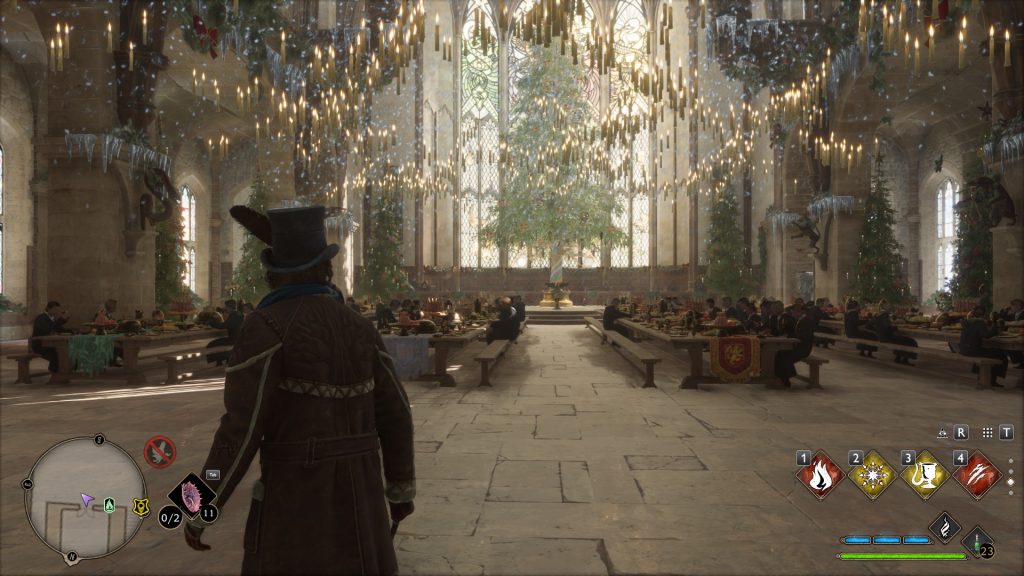
Design
I don’t think the voiced protagonist detracted from Hogwarts Legacy, but I do think the game would have benefited significantly from a few more hours of recording studio time. For a game that expects forty or more hours out of players, it doesn’t seem to have anticipated that we may enter Hogsmeade, the village in the school’s shadow, frequently enough to hear lines like “Does it get any more cozy than Hogsmeade?” and “It seems all roads lead to Hogsmeade” at least two dozen times apiece.
Similarly, the decision to ground fast travel in in-game lore by invoking the power of floo powder and associating it with engravings of the substance’s inventor is both the sort of great idea that gives Hogwarts Legacy its character and an idea that is unimaginably sabotaged by the lack of a cap on the frequency of that character’s remarks each time we pass her on a wall, pillar, or rock.
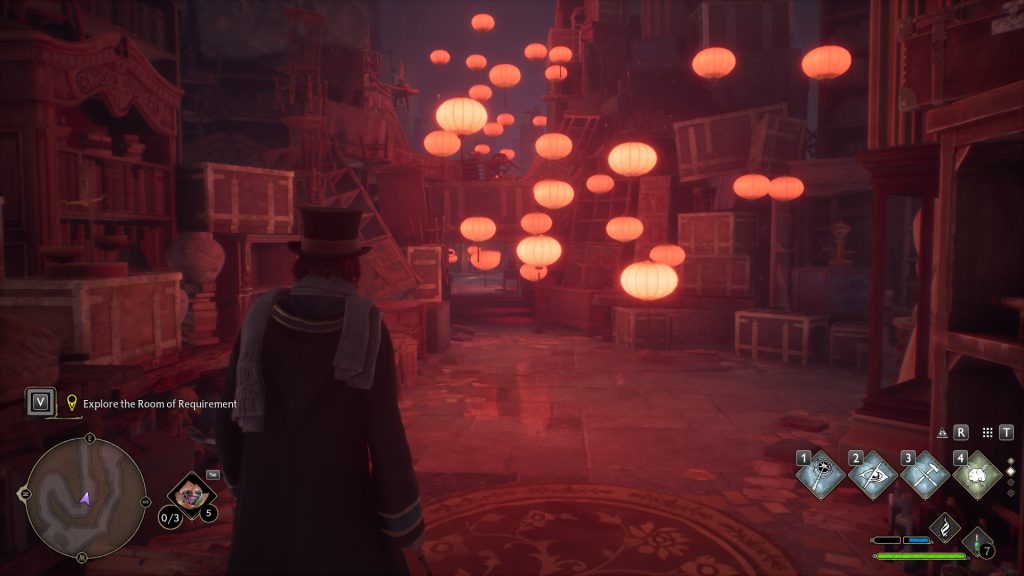
One more character who could benefit from a greater diversity of lines is Deek, the House Elf attached to the room and duty-bound to assist us. Deek’s a fun little character, but his presence becomes more repetitive with time, especially given that the game locks him to one spot in the Room of Requirement, a place we’re meant to use as a home base.
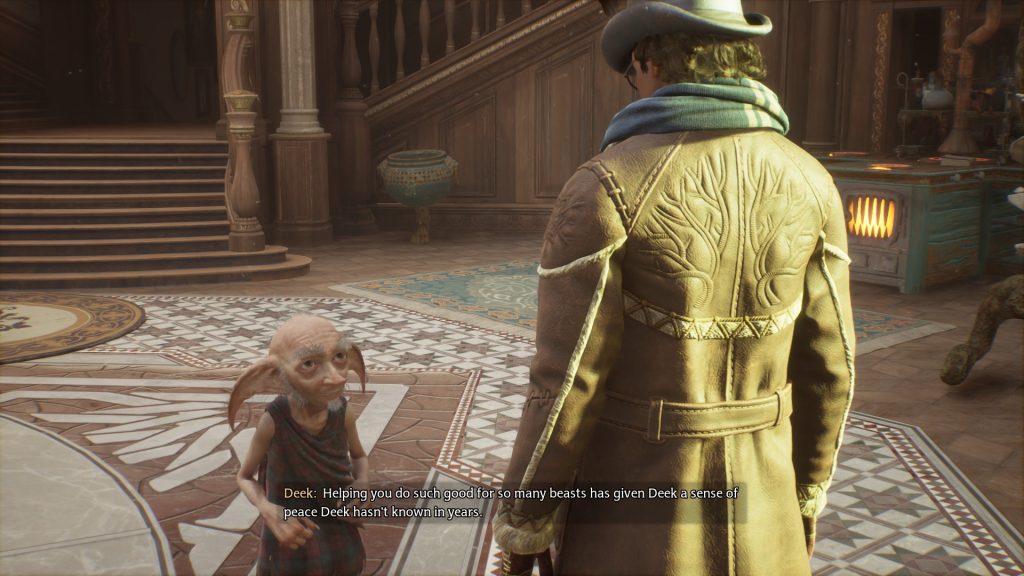
Let’s talk a little bit about the Room of Requirement. Like the floo powder transportation, using the lore of the Room of Requirement to allow the player to build and customize their own in-game base of operations is a very smart way of grounding a game mechanic in the lore of the established universe. I felt psyched and cautious in equal measure when the feature was first announced. I was looking forward to designing my own room, but I was worried about some of the brewing and animal care mechanics; games have become all too comfortable instituting measures to unnecessarily extend playtime, and brewing timers and magical creature tending seemed like they could fit that bill.
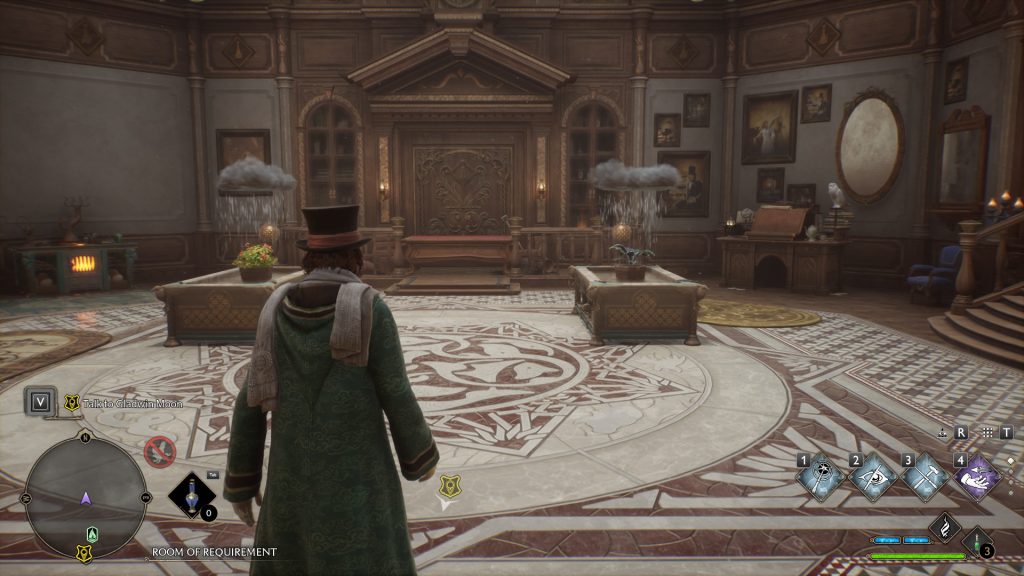
Luckily, they don’t. Not really. Magical creature caretaking can be tedious, but it’s completely optional. I suspect those who engage with it will enjoy it and those who ignore it won’t know the difference (though they may miss out on some of the equipment upgrades the mechanic offers). Potion brewing, meanwhile, is anything but intrusive. Timers are more a means of gating overconsumption, but even still, the game throws more potions at you than you could reasonably use anyway.

Overall, I enjoyed the Room of Requirement as a staging point for our in-game operations, but while I was glad many of its submechanics were optional, I did find myself wishing they were better woven into the game. The magical creatures we poach save from poachers are allowed to live out their days in scenic, customizable menageries. The customizability of these areas is pretty broad and dynamic. We’re allowed to place flora and decor, but the game also gives us the ability to construct entire buildings. I’m a sucker for creative building in video games, but here it felt too tangential to the game to be really meaningful. Why would I build a house or tower of my own here if I can’t even put my crafting stations in it? In the end, I was glad the game allowed me to build, but I never really had much interest in doing it.

Mechanics like these are the growing pains that Hogwarts Legacy usually handles relatively deftly. I’ve seen some complaints online about the game’s inventory system. I wasn’t too bothered by it, but it does feel a little weird to spend the whole game picking up sweaters that somehow proffer 300% the defensive capabilities of an identical sweater I picked up earlier. The ability to transmog clothing items from the start is a godsend that saved me from looking like a goofball by prescription (I prefer to look like a goofball by choice), but it might have been nicer if the game had allowed us to maintain those transmogrifications across upgrades; having to select the robe I want to wear gets tedious when I’m upgrading to a new one every half hour or so. Ultimately, though, I think the game handles these hiccups relatively well.
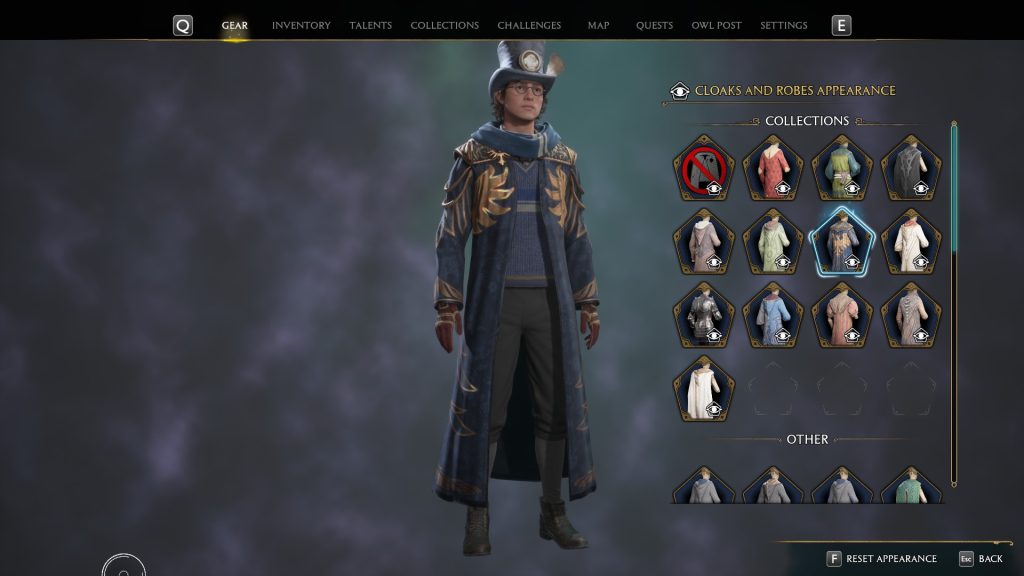
There are a lot of features that made it into Hogwarts Legacy. One that I wish had been saved from the fate of the cutting room floor is real, dynamic companions. The game lets characters like Sebastian, Ominis, Poppy, Natty, and Amit accompany us on specific quests, but evidence left behind in the code indicates that its companion system was originally meant to be much deeper, allowing us to freely explore with a surprisingly wide cast of classmate allies. I don’t want to spend too much of this review reviewing what isn’t in the game, but I can’t help but think this would’ve been a huge boon to characterization and relationship building (provided they could record enough lines to avoid the rampant plague of repetitiveness). Over my playthrough, Sebastian and Poppy were the only two characters I felt I had developed a significant relationship with. It would have been nice if I could have had that experience with characters like Natty, Amit, and Imelda Reyes. At the very least, it would’ve been cool to spend more time running around with the friends I did make.
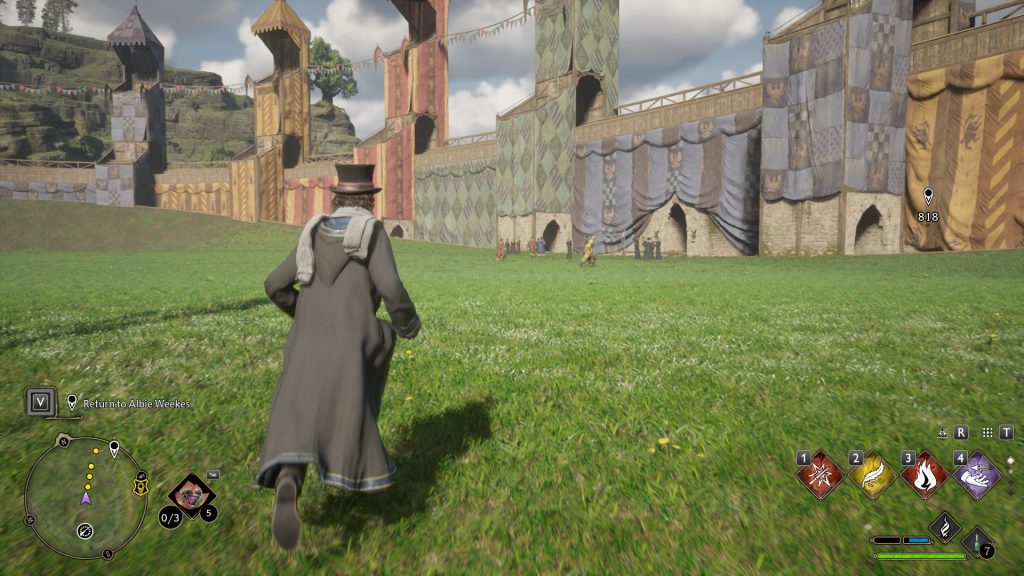
Conclusion
I’ve done a lot of complaining in this review. I’ve dug deep into the mechanics and I’ve laid bare the concerns and issues I have. But at the end of it all, I really want to make clear that I enjoyed this game a lot. I think the team at Avalanche did a really good job with the constraints and experience they had.
The atmosphere of Hogwarts is nearly perfect, the game exudes love and respect for both the integrity of its fictional universe and the people who care for it. For everything that bugged me, there were plenty of features and moments I really dug. Did the game’s stealth mechanics threaten to render its combat redundant? Sure. Did I love that they grasped the opportunity to replace stealth takedowns with Petrificus Totalus? Absolutely. The overall design of this game feels like it was undertaken carefully by devs armed with fine-toothed combs and always ready to identify opportunities to inject this adventure RPG with as much wizarding world DNA as possible. As a result, it feels authentic throughout and succeeds at being a love letter to the fans who have waited so long for it.

That this game is performing so well gives me hope. If this were the last and best Harry Potter game we would ever get, I’d be more than happy with it. Most franchises aren’t fortunate enough to receive a game built with the love and attention to detail endemic to this one. But knowing that it’s been received so well both critically and financially makes me think a sequel is probably likely. And with everything this team was able to do in their first offering, I am incredibly hopeful that a follow-up title might be able to deliver even more and really solidify itself not only as the best Harry Potter game, but also as one of the best game adaptations of all time. Clean up some of the loose mechanics, add in companions and maybe Quidditch or Diagon Alley, cover everything with a new story, and let us explore all over again.
Of course, I have to step back again and remember that this is a review of the game that was and not the hypothetical game that could be. And that game, as you already know, is one that I thoroughly enjoyed, despite the issues I ran into. This game awoke eight-year-old Ben, but it also engaged the adult me in a way children’s franchises often struggle to do. Most importantly, it kept the magic alive. The experience was all in my head, but for the month-long dalliance I spent with Hogwarts Legacy, it felt all the more real.

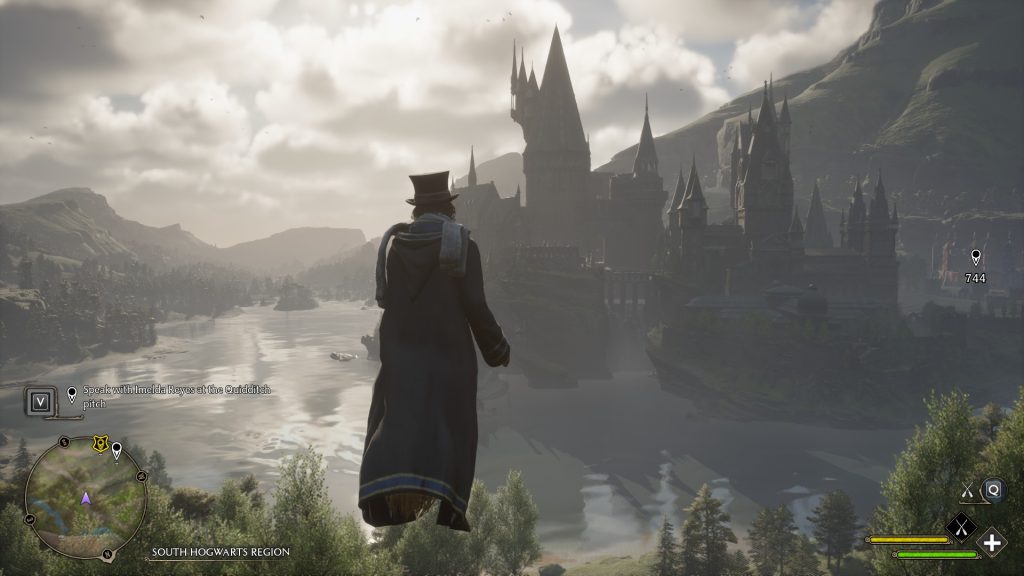
Quick Review
Game: Hogwarts Legacy
Developer: Avalanche Software
Published by: Warner Bros Games
Available for: Windows PC, Playstation 5, Xbox Series S|X, Playstation 4 (May 5, 2023), Xbox One (May 5, 2023), Nintendo Switch (July 25, 2023)
CONTENT
Microtransactions: None
Tedium: Minor (Everything even metaphorically related to Alohamora, optional filler side content)
Violence: Wizard murder and torture
Content: Alcohol, wizard torture
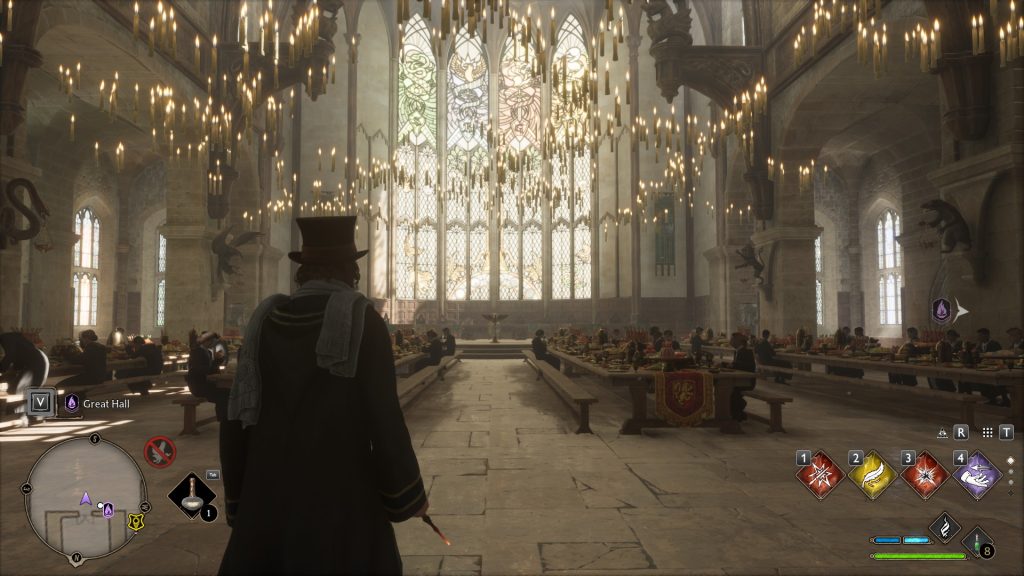
FEATURES
- Single-player
- Open world
- Narrative-focused
- Magic spells & combat
WHAT I LIKED
- Fully realized Hogwarts – This is, by far, the most complete Hogwarts we’ve seen in any interpretation of the wizarding world. Expertly melding scenes from the books and films with newly-created spaces makes exploring Hogwarts the best part of this game.
- More intuitive and engaging spellcasting – Previous Potter games always struggled to make the magic dynamic and fun. With some hiccups and limitations, Hogwarts Legacy manages to hit the mark.
- Magic – Hogwarts Legacy offers players around 27 spells with which to attack poachers and interact with the world. While I think the devs could have been more creative in designing puzzles that require intuitive spellcasting to solve, the sandbox they do give us comes replete with plenty of toys that allow players to approach combat and exploration uniquely.
- Narrative and environmental pacing – Playing out over a full year, the game divides its main quest into four seasons, grounding our actions in time and allowing us to experience the castle’s requisite festive vibes.
- Flying and exploration – The world outside of Hogwarts isn’t nearly as interesting as the wonders hiding within the castle’s walls. Being able to explore it all flying on my broom almost makes up for that. It bears repeating that exploring Hogwarts is genuinely alluring. I found myself wanting to make sure I’d delved down every hall, inspected every classroom, interacted with every student I could before I pulled myself away from the game.
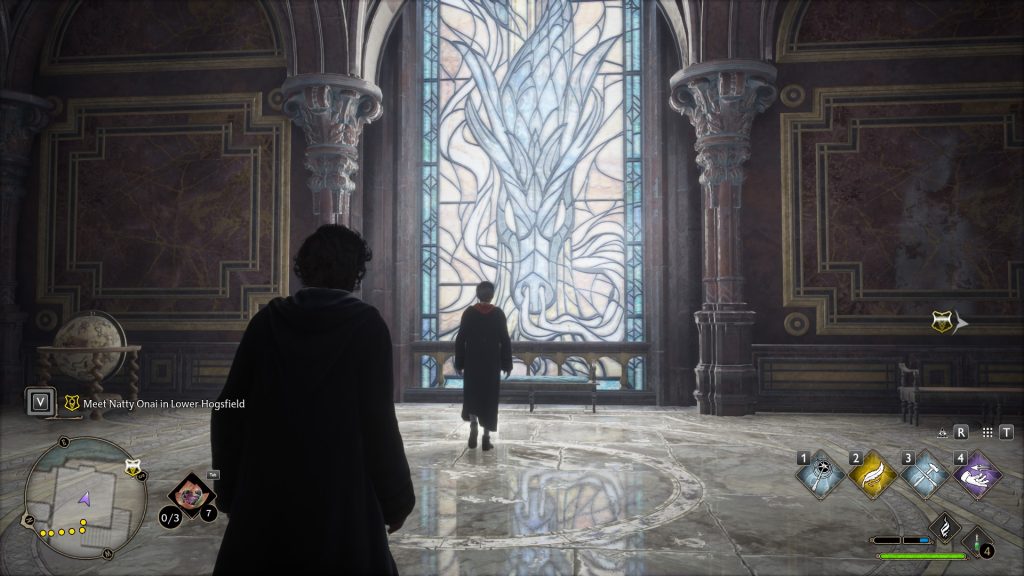
CONCERNS
- Non-Potter fans aren’t playing the same game – I had a blast exploring Hogwarts, but I’ll be the first to tell you that a lot of that enjoyment was augmented by my existing familiarity with the school and its lore. I grew up on Harry Potter, and my affection for the universe is baked into my experience. I’ve heard plenty of non-fans say they’re enjoying Hogwarts Legacy, but given that the strongest component of the game by far is its digital rendition of the school from the books and films, I wouldn’t be surprised if those who missed the Hogwarts Express the first time around have a harder time understanding the hype.
- Impotent collectibles – Hogwarts and its surroundings are filled with interactive elements and minigames that contribute pages to the player’s handbook, awarding experience points unavailable elsewhere. Each element and minigame also contributes to the unlocking of cosmetic items. Some of these (the Daedalian Key reward) are absolutely worth the effort, but others leave something to be desired.
- Limited depth – While Hogwarts Legacy is, at its core, a roleplaying game, its roleplaying mechanics are pretty surface-level in depth. The game’s talent tree does force players to make some decisions about the direction of their characters, but I found many of the talents to be so far from my natural playstyle that they didn’t even necessitate a choice. I picked the ones I was interested in and had plenty of points left over. The game’s story allows for some player agency and decision making in narrative direction, but most choices are choices in name only. Most players will be playing the same game at most times. Finally, the plentitude of spells opens up opportunities for diverse approaches to combat, but gear upgrades are strictly “numbers go up” and involve no decision making. Altogether, Hogwarts Legacy is a very light RPG.
- Shy characters – Many of Hogwarts Legacy‘s students and teachers are conceptually interesting, but their limited screen time makes it hard for the ideas behind them to be fully realized.
WHO’S IT FOR?
If you’re a Harry Potter fan who’s maintained an affection for the universe despite all the two of you have been through together, and if you have any interest in plunging into the world of the series to see if you can make it as a Hogwarts student, this game is for you. Alternatively, if you’re not a veteran Potter fan, but you’re interested in a 40 hour or so wizard RPG with limited depth but strong character, this one might be worth a shot.
On the other hand, if you’re a Harry Potter hater (or just someone who never bought into the hype), if you like your RPGs deep and complex, or if you’re a completionist looking for a worthwhile challenge, Hogwarts Legacy might not be for you.
As a final note, it bears repeating that there is an active boycott against this game for its connection to J.K. Rowling with regard to her position on the rights of trans people. What you do with that knowledge is up to you. Unless you choose to buy the game because of the boycott. That’s insane.
